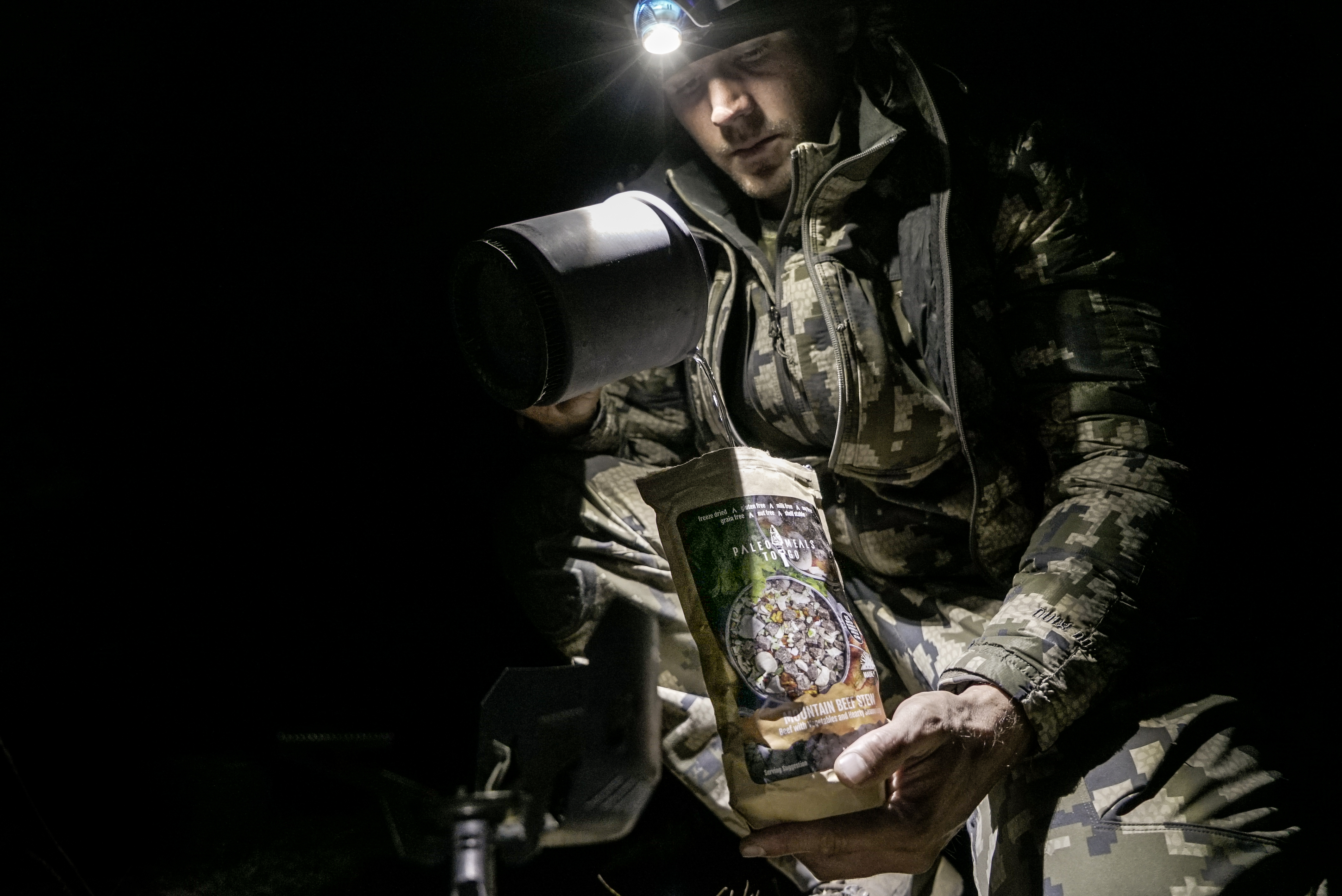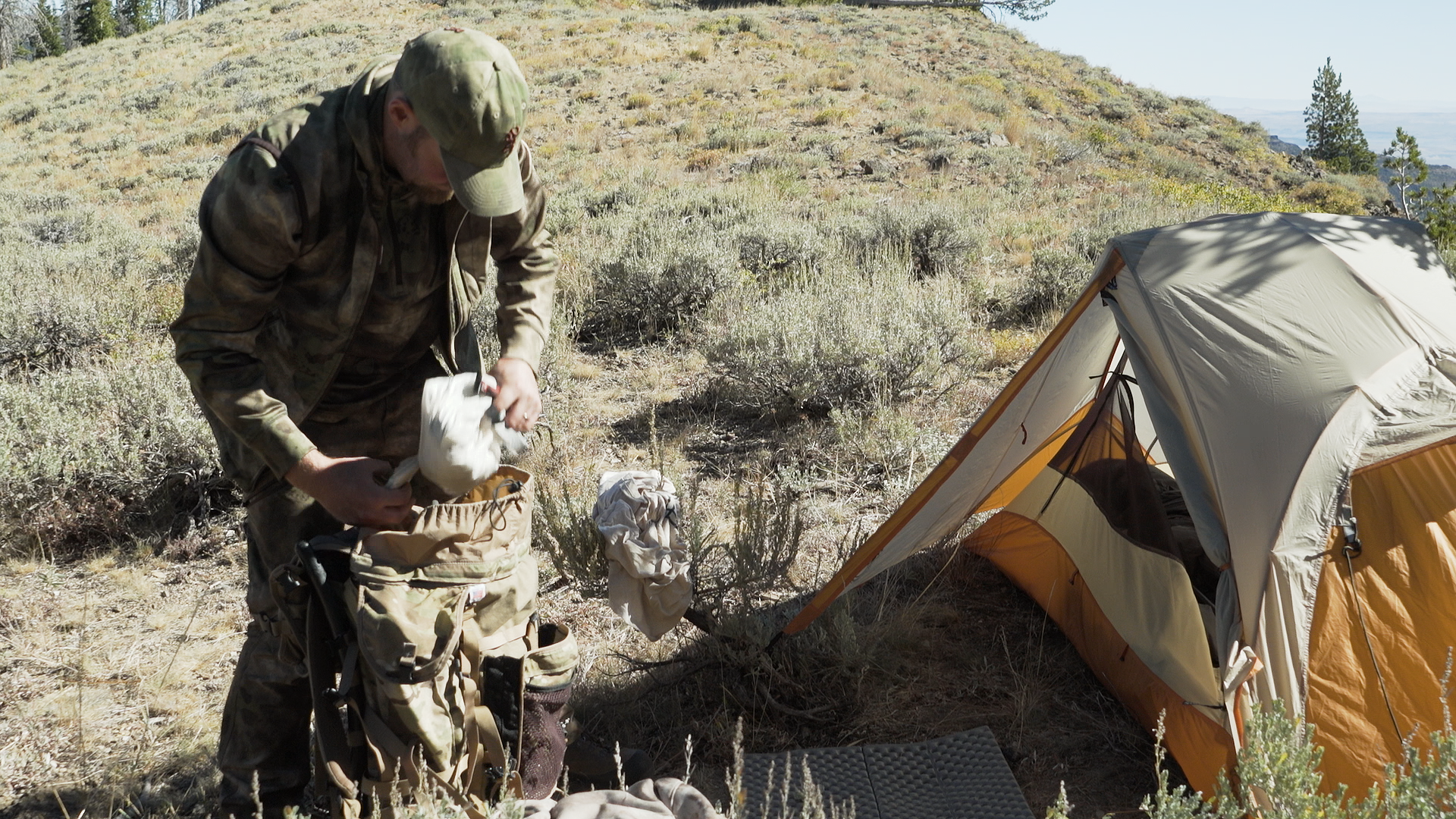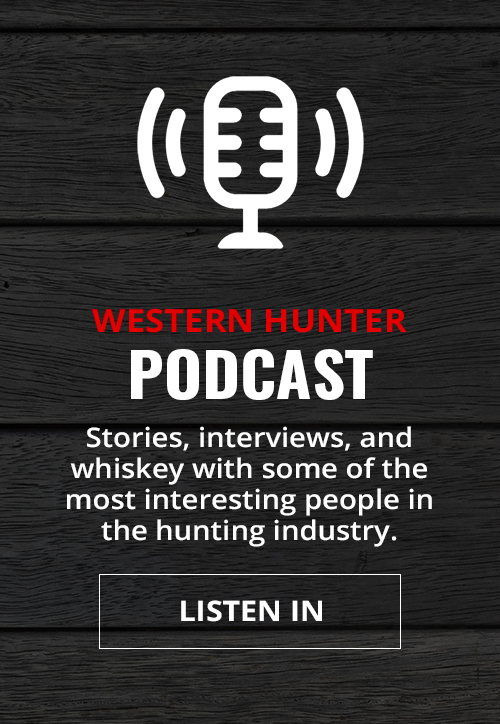NOTICE: Certain links on this post may earn a commission for Western Hunter Magazine from Amazon or our other affiliate partners when you make a purchase. Thank you for your support.
Tweaked: The Ever-Evolving Hunting Gear List
It’s been a long time since I wrote an article about my hunting gear list. A lot has changed since then. This article will detail the upgrades and additions I’ve made since then.
Over the past several years, I’ve made some upgrades on pieces of equipment that saved me on weight. However, it seems that every time I do shave weight, I justify replacing that weight with something else.
Example: I invested in a top-of-the-line sleeping pad that weighs barely over 1 lb., saving me over 10 oz. Upon doing this, I rationalized that I could now justify packing my cell phone for safety, checking the weather, checking in with family, etc. when service was available. I also added a charger for it, essentially replacing that 10 oz. saved with a cell phone/charger. Ultimately, I didn't save weight, but I gained benefits. This is just one example of several.
I suppose this means that I’m comfortable with my pack weight or I wouldn't be replacing weight saved with more stuff. Over the past five years, my overall pack weight for backpack elk hunting hasn't changed much, but I’ve upgraded many items and added others that are assets to my hunt, so I feel like I'm in a better place overall.
A Flexible Blueprint
The reason I decided to choose detailing my early-season elk hunting equipment is because that’s the type of hunt I do most often and it generally requires the most gear, with elk calls, a decoy, bigger game bags, etc. I typically only do backpack-style hunts for early (August-September) mule deer and elk, but I occasionally take on a late-season backpack hunt. I will also detail how my system will be tweaked for mule deer and late-season trips.
This hunting gear list is everything I might possibly pack on a week long backpack archery elk hunt during the rut. This hunting gear list will often get adjusted based on the type of terrain I’ll be in.
For example, if I’m headed into elk country comprised of dense forest with few openings, I’d probably leave my spotting scope, decoy, and possibly even my tripod. Those three items would save me over 8.5 lbs., getting my pack weight down to a starting weight of roughly 38 lbs. vs. 46.5 lbs. That’s a considerable weight reduction, but one I’m only willing to make if the terrain warrants it. It would be rare for me to leave all three of those items, but not to leave one or two depending on terrain.
Another terrain-related factor would be how isolated/rugged the area is. If it was a remote area with no chance of cell service, I’d leave the phone and charger - or better yet, replace it with a satellite phone.
If the terrain is unusually steep and rugged, I usually try and lighten my load a little so I don't get too worn out. I have plenty of items that I like to have but don't absolutely need - decoy, scent spray, foam pad, garbage bag, extra shirt and underwear, among other items.
I could also consider a lighter spotting scope, but that would compromise optical quality. This isn’t as big of a deal on elk as it is for judging deer. The point of course is that my hunting gear list is the maximum I might carry, but could get trimmed or tweaked to meet the needs I have for different hunting situations, and will only get lighter as the hunt goes on while food/fuel is utilized.
Mule Deer vs. Elk Hunt Tweaks
On a mule deer hunt, I cut the obvious stuff like elk calls and decoy, which saves almost 3 lbs. immediately. Next would be smaller game bags vs. elk sizes, and often I won’t pack parachute cord, because unlike elk, I’ll usually try get everything out in one load (keep in mind I usually have someone with me to help pack meat). With elk, I usually have to hang quarters, returning later with pack animals or to fetch more loads on foot.
Considering that most of my backpack deer hunts are early-season archery hunts in August and early September, I sometimes make slight gear adjustments based on the weather. For example, I’ll take a lighter weight sleeping bag rated at 30 degrees vs. my 15-degree bag.
I might even roll the dice every once in a while and swap out my rain gear for a $2 emergency poncho (1.8 oz.) in the event there is a forecast of zero chance of precipitation and I’m familiar with the area’s weather patterns. I did have this backfire on me once when it snowed on an evening that it was forecasted to be warm and dry. This isn’t the necessarily the brightest way to save weight.
One area where I used to try and shave weight on these early backpack hunts was with insulation layers, but after a few very chilly morning glassing sessions, I’ve come to my senses. It can be tempting to leave the warm clothes behind after you’ve just driven through Elko, Nevada when it was over 100 degrees, but once you get on the peaks glassing in the wind before the sun comes up, you’ll want some clothes…trust me.
One item I can think of that I might trade in for a heavier item would be a water filter instead of purification drops. This is something I consider on high-elevation deer hunts or even elk hunts in extremely arid terrain where water sources may be only seeps or dirty water. The filter can make filling water bladders a lot easier than trying to fill them without the convenience of a flowing stream. The added weight of the filter is minimal, weighing in at 8.7 oz. vs. 2.9 oz. with the drops.
Another item I like to add on high country deer hunts where shade is often scarce and there is abundant sunshine is something to protect my face, neck, and hands from sunburn. For my face and neck, I pack Buff headwear; for my hands, I wear fingerless gloves by Simms. These items are super lightweight and do a great job of protecting skin after hours of glassing in direct sunlight.
The final item I might consider adding, particularly for a deer hunt, would be lightweight stalking slippers or felt bottoms for my boots to help quiet my footsteps on stalks. All in all, I still generally lighten my pack weight by 3-4 lbs. on early deer hunts when compared to elk.
Late Season vs. Early Season Tweaks
There are a lot of adjustments across the board, so to keep things simpler, I won’t label this as late-season elk or deer. This will keep things simpler.
The first thing I’d swap out is the 15-degree sleeping bag for a 0-degree down bag. Next would be clothing. I’d pack or wear gaiters, wear warmer boots and socks, pack a super thick pair of socks specifically for sleeping in and all-around warmer clothing - jacket, gloves, beanie, merino leggings, etc. I also take along a lightweight pack cover to ensure my gear inside stays dry.
The longer, cold nights of the late-season hunts usually means that I’ll be having an extra cup of coffee to warm me up now and then, so I pack a bigger fuel canister to allow for this. Plus, it takes longer to boil water when it’s cold, so extra fuel is necessary.
If it’s really cold, I may swap out my tent with a tepee-style tent with a lightweight wood-stove. Last year, I used a Kifaru TUT with their titanium Cylinder Stove and it was a treat. The difference between trying to lace up boots in the morning that are frozen stiff vs. warm, dry boots is night and day!
Those are just a few of the major examples involving the differences between early-season and late-season backpacking. There are many other small items, but to detail everything is a lengthy article in itself, so I’ll stop here.
Now I’ll summarize each category of my hunting gear list and some of my thoughts on picking things the way I do.
Food & Drink
I don’t pack the exact same food on every hunt; that would get old fast. However, my overall food weight is pretty much the same after I swap one thing out for another from hunt to hunt.
Over the years, I’ve tried a lot of freeze-dried backpacking food. I finally found something that rivals my old standby Mountain House, and that is Paleo Meals To Go. The only complaint I can come up with is that they aren't as filling as the Mountain House dinners, but they are also considerably lighter and use less water.
The last time I wrote an article on my hunting gear list, I was 30. Now that I am quite a bit older, I’m sad to say I feel the difference. It’s all good; I just have had to get more serious about fitness and nutrition in my everyday life to be able to hunt the way I want. Consequently, something I’ve added to my list is a multivitamin by Wilderness Athlete, which I take every day, so no reason to stop during a hunt.
I also drink a lot more water and consciously consume a lot more vitamins /minerals daily via Wilderness Athlete’s Hydrate & Recover drink supplement. I add this to my water – a nice backcountry treat.
Cooking
I’ve checked into stove systems that take up less room, but since I rarely hunt alone and it’s nice to have a cooking pot that’s large enough to boil two dinners worth of water at once, I’ve stuck with the Primus EtaExpress stove.
The 4-Liter MSR DromLite reservoir that I pack with me (empty) comes in really handy for when I want to camp up high for glassing and there’s no water nearby. This way I can just fill up the 4-liter reservoir and pack it up to my camp. It lasts me a couple of extra days before I have to get more water for cooking.
Toiletries
I used to try and pack a small toothbrush and paste with me, but I’ve since found something lighter and a lot more convenient - Wisps by Colgate. I find that I brush more often when I pack these, though I doubt they do as good of a job as a proper toothbrush.
I also used to take unscented sunscreen, but I usually didn’t want to hassle with putting it on, so now I just pack a Buff and UV gloves, which I find a lot more convenient than sticky sunscreen.
I finally got around to testing all the unscented underarm deodorants I could find, because I think the scent killer type sticks marketed to hunters tend to be crumbly. I found that the unscented ones labeled as “natural” produce a fairly strong citrusy odor that comes from the natural ingredients. So, I’ve settled on Mitchum SmartSolid, which does have artificial ingredients, but it truly is unscented, at least to my sense of smell. I then transfer a small amount into an empty travel-sized deodorant dispenser that I washed out and jam some of the unscented deodorants into it. This saves me 2 oz. vs. packing the full sizes stick.
Equipment
I’ve made some significant changes in this area over the last five years with major pieces of my equipment. I’ve shaved over 2 lbs. by switching packs, sleeping bag, and pad, all while gaining benefits in the process.
My new Exped sleeping pad has proven more durable and just as comfortable as my old heavier one; my sleeping bag is warmer and lighter, and my pack is lighter and keeps me more organized. However, as is typical, the upgraded pad and sleeping bag comes at a much higher price tag.
I’ve tested lighter tents recently and have been disappointed, so I’m sticking with the Big Agnes Copper Spur UL1. The only exception for me is on cold-weather hunts when I want a tent that allows me to use a lightweight wood-stove as I mentioned previously.
Backup Equipment
This is a tough category because there are a lot of things that could go wrong and/or break in the backcountry, but I just can’t be packing two of everything and a Leatherman tool to fix it. I’ve settled on being happy with the shortlist of what I currently take. I try and only take gear that is high quality enough that it won’t break or malfunction, and focus on packing backups for things I’m more likely to lose than break, like my release and cow calls.
Clothing (Packed)
Earlier, I mentioned the major tweaks I would make to this category if I was going on a deer hunt or late-season hunt vs. the early-season elk hunt my list is intended for, so I won’t regurgitate that here. I will say that one of my favorite upgrades I’ve made over the years in regard to clothing is investing a little more money in merino wool briefs instead of synthetic. My biggest issue was finding a pair that lasted more than a few hunts, as the durability wasn't great. The best pair I’ve found by a long shot is Browning’s MHS Brief from their Hells Canyon Speed line.
Total Weight
While I haven't shaved any of my overall pack weight through the years, I’ve added to my comfort level and performance, and have just about everything I could possibly ever need with me in the field. I’m sure I’ll be making further upgrades as new products hit the market, but for right now, I’m happy.
Worn and/or Carried
While these items aren’t intended to be packed in my backpack, I still try to think “light” when selecting these items. The fact is I still have to carry them one way or another.
One new item I’m excited about is the Outdoorsman Bino Harness. This has solved a dilemma I’ve had since I switched to handheld release aids several years ago: where to store it safely. This new bino harness has a perfectly sized pouch on the front for my handheld release aid, and it also does a great job of securing my binoculars.
The one area I don’t take much consideration in weight is my bow and arrow setup. It’s just too important and it takes some abuse, so I don’t select them or the accessories based on weight. I select everything based on accuracy, durability, quietness, etc. Plus, I want my arrows to be heavy, not light.
Summary
This is where I’m currently at with my list, including every item I take with me on my early-season backpack elk hunts. Reference/compare it to your own system. Hopefully, this either helps you fine-tune your system or helps you pack for your first backcountry hunt.
While I do cherish a deluxe elk camp complete with a barbecue and a cooler full of ice, backpack elk hunting is still far and away my favorite way to spend September. The simplicity of taking along only what you can carry is liberating, and it only makes barbecue taste that much better once you get out of the backcountry.





